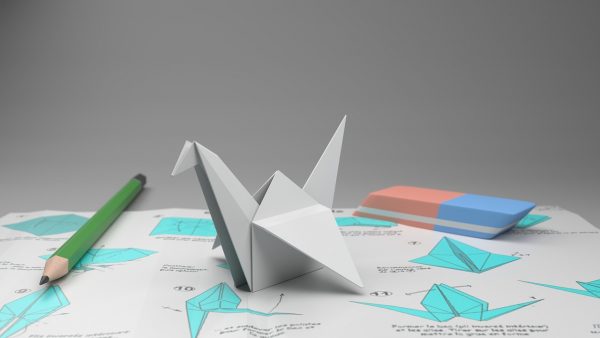Wie Sie ihre 3D Modelle optimal für den 3D Druck vorbereiten.
In der Praxis sehen häufig gedruckte 3D Modelle in der Realität nicht annährend so gut aus wie auf dem Bildschirm.
Um eine möglichst hohe Qualität des 3D Drucks erreichen zu können, haben sich einige Vorgehensweisen bei der Modellierung bewährt, die wir in diesem Beitrag etwas näher vorstellen möchten. Im Detail zeigen wir ihnen, wie Sie die häufigsten Fehler vermeiden, wie Materialien und 3D Technologien die Bedruckbarkeit eines Modells beeinflussen und wie Sie hochwertige Designs erstellen.
Vorbereitung auf die digitale Entwicklung.

3D-Modelle, die in einer digitalen Umgebung erstellt werden, haben nicht immer mit physikalischen Effekten wie Schwerkraft oder inneren Spannungen an Verbindungspunkten zu kämpfen. Es wird erst kritisch an der Stelle, an der Sie ihr Modell in 3D drucken. Dann wird es zu einem physischen Objekt, das den Gesetzen der Natur ausgesetzt ist. Deshalb sollte zusätzliche Stabilität in das 3D Modell gebracht werden.
Es existieren mehrere einfache Regeln, die dafür sorgen, dass das 3D Modell richtig vorbereitet ist:
- Stellen Sie sicher, dass alle Teile ihres 3D Modells innerhalb der Geometrie miteinander verbunden sind.
- Stellen Sie sicher, dass ihr Modell wasserdicht ist.
- Verwenden Sie einen kontinuierlichen flow für die Außenfläche
3D-Drucktechnologie & Materialrichtlinien.
In den weltweit am häufigsten genutzten 3D-Drucktechnologien für den industriellen Einsatz, hat jede Drucktechnologie ihre eigenen technischen Einschänkungen und Materialspezifikationen. Um für die jeweilige Drucktechnologie zu optimieren, ist es wichtig, die Anforderungen schon während der Modellbildung zu kennen.
Verwenden Sie die folgenden grundlegenden Richtlinien, um 3D-Modelle für bestimmte Technologien vorzubereiten:
- Für FDM– und SLA-Technologien werden Stützstrukturen für beliebige überhängende Stellen benötigt.
- Pulvertechnologien benötigen im Allgemeinen keine Stützstrukturen, mit Ausnahme von SLM.
- Bei SLA- und anderen Pulvertechnologien (SLS, SLM, CJP) ist es wichtig, Fluchtbohrungen einzubauen, um das nicht gesinterte Zusatzmaterial zu entfernen.
- Durch das Aushöhlen Ihres Modells zum Bedrucken großer Objekte sparen Sie Materialkosten und Fertigungszeit.
- Bei der Erzeugung dünner und vieler Elemente können diese schrumpfen. Dies ist auf den Abkühlprozess und die daraus resultierenden inneren Spannungen zurückzuführen.
- Eine nachträgliche Materialzugabe an den Ecken, die später wieder entfernt werden können, sorgen für eine starke Haftung an den Außenecken.
- Jede 3D-Drucktechnologie hat ihre eigene Auflösung, aber normalerweise sind Details kleiner als 0,1 mm und nach dem Produktionsprozess nicht sichtbar.
- 3D-Drucken hat auch seine eigene Dimensionstoleranz, was bedeutet, dass die Abmessungen eines physischen Objekts von denen des digitalen abweichen können. Die normale Toleranz beträgt -/+ 2% und sollte immer berücksichtigt werden.
Prüfen der Wanddicke.
Einer der häufigsten Fehler bei 3D-Modellen, die für die Produktionsvorbereitung vorbereitet werden, sind Bauteile mit zu dünnen Wänden. Während es in der digitalen Welt möglich ist, Oberflächen zu erzeugen, ohne ihre Dicke zu betrachten, führt dies in der physikalischen Welt zu einer Vielzahl von problematischen Ergebnissen.
Dünne Elemente, besonders wenn sie zusammengelegt werden, können entweder brechen, verziehen oder nicht die Haltbarkeit bieten, die zur Unterstützung anderer Teile des Modells erforderlich ist. Aus diesem Grund empfehlen wir dem Benutzer, keine Modelle mit Elementen mit einer Dicke von weniger als 1 mm zu entwerfen.
Korrekte 3D-Modellauflösung.
Der 3D-Druck basiert auf der Interpretation der Mesh-Darstellung von Objekten. Dabei handelt es sich um eine Reihe von Dreiecken oder anderen Polygonen, die durch ihre gemeinsamen Kanten oder Ecken miteinander verbunden sind. Beim Exportieren des 3D-Modells und beim Einstellen der Triangulation ist es wichtig, die Anzahl der Dreiecke während der Ausgabe richtig einzustellen:
- Zu viele Dreiecke können den 3D-Druckprozess einschränken oder unnötig verlangsamen.
- Wenn zu wenig Dreiecke verwendet werden, ergibt sich ein grobes oder qualitativ minderwertiges Modell.
Ein kleiner Ausblick.
Die Herstellung von Zusatzstoffen weitet den Einsatz der 3D-Drucktechnologie in vielen Industriezweigen rasch aus, da Sie im Vergleich zu alternativen Methoden deutlich günstiger und schneller ist. Die Nutzung von Best Practices von Anfang an sowie automatisierte Prozesse ermöglichen es Unternehmen, ihre Produktion zu vereinfachen und zu beschleunigen.
In kommenden Blogbeiträgen werden wir ihnen noch weitere Tipps für hochwertige 3D-Druck mit auf den Weg geben.


